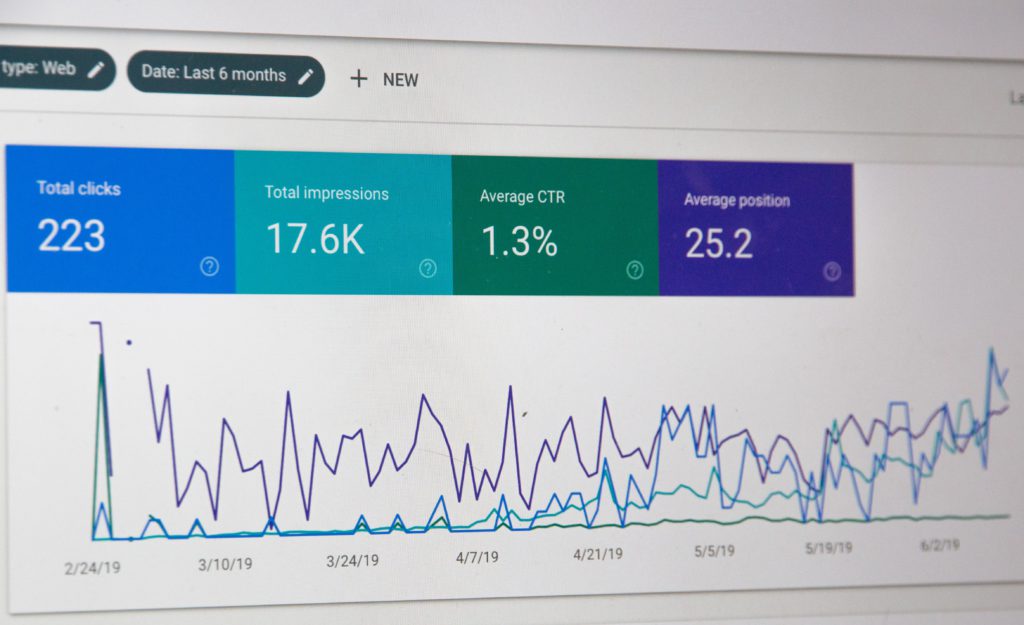Very few brands have universal appeal. In fact, trying to appeal to everyone can be a mistake. It can dilute your marketing messages, increase your marketing budget, and mean that your efforts lack focus. The customers aren’t getting the info that’s relevant to them, and you’re missing out on potential sales. That’s why you need to identify your target audience.
As a marketer or salesperson, it’s important that you always have your target audience in mind. Doing so allows you to maximize your marketing impact and improve your sales figures. Thankfully, finding your ideal customers can be a relatively straightforward task. We take a look at everything you need to know about identifying your target audience.

What Is A Target Audience?
Although it sounds straightforward, there are many different data points that can contribute to defining a target audience. Businesses often use a wide range of data to create personas and then tailor their marketing efforts towards these demographics.
Simply put, a target audience is a group of people who fit into a certain demographic and set of behaviors. These groups of people are the customers that businesses want to attract, or whom they aim their products and services at.
Often, businesses will use as much information as possible to identify their target audience. Frequently, this means that they will come up with a variety of personas, allowing them to personalize their marketing further.
Examples of target audiences
Now that we know what target audiences are, it’s time to take a closer look at some of the attributes used in defining them. Generally speaking, the more information you have about the people using your products or services, the easier it is to come up with personas.
Although there are many different points of data that you can work with, they generally fall into three main groups:
- Demography. This term refers to a user/customer’s socio-economic data. So, things like age, gender education, income, and geographic location. You can combine this data in many different ways when creating a campaign. For example, you may be aiming at young people (age 18-24), with degrees, who live in big cities.
- Interests. To add an extra layer of personalization, it’s useful to know the things your users are interested in. By knowing their hobbies and passions, you can further target them with your marketing activities. For example, sports fans in your key demographics will likely be particularly interested in any upcoming sporting events.
- Purchase intentions. When it comes to online shopping, knowing if a particular group of customers has recently looked at a specific product or service often means they’re considering buying it. They may need more specific information about what they’re looking at, and you can provide it.
As you can see, these three broad areas can add many layers that can help in defining your target audience. Not only can you include the customers who are most likely going to engage with your brand, but you can also understand how to attract new demographics.
As we’ll see, target audience data is essential to sales teams and marketers. But there is a difference between a target market and a target audience.
The Difference Between a Target Market and a Target Audience
Another term that’s often incorrectly used synonymously with target audience is target market. Both of these expressions do have similarities; both are related to the specific market segment a company targets with its products, services, and brands.
However, there are some significant differences. These differences generally relate to the way marketing and sales departments target potential customers and the detail in which they understand these potential leads.
To make this difference clearer, let’s look at a more detailed definition of each:
Target Market
Your target market is the group of people your product or service is aimed at. This group of people has the potential to buy what you’re offering, but they may not. As a marketeer or salesperson, your goal is to get your product or service in front of these people and build your brand awareness amongst them.
Target markets are generally fairly broad in scope. They can then be segmented to narrow your approach, usually by demographics such as age, gender, income, etc. Understanding your target market is the first step in understanding your target audience.

Target Audience
Your target audience is a group of people within your target market that are likely to respond to your brand advertising. It’s usually a far narrower group of people than in your target market, and their potential to engage with your business is often much higher.
Businesses often have many different target audiences. This means that they will usually run different campaigns based on a variety of factors. These campaigns will focus on a variety of elements that are relevant to the target audience.
There are three main aspects that come into play with your target audience:
- You think of them when creating content
- You most want them to see your content
- You think they will respond best to your content
Market vs Audience
As you can see, the main differences here are centered on the scope of each segment. Target markets are broader and, on the whole, less primed to engage with your brand and purchase from you. Target audiences are more specialized and often more likely to be interested in what you’re offering.
Both of these terms are essential for your marketing activities, and it’s important to understand how each fits into your brand. By understanding the broader and more granular detail of whom your products or services appeal to, you can adjust your approach when engaging with these people.
Why Do You Need To Define Your Target Audience?
You can probably already see some of the reasons you need to define your target audience. However, it’s such a detailed area that many people don’t immediately think of all the aspects.
Defining your target audience is one of the most important parts of your business model for several key reasons:
Focus
One of the most important elements of brand messaging is its focus. As the old adage goes, if you’re trying to talk to everyone, you end up talking to no one. Once you’ve identified your target audience, you can appeal directly to them and filter out those who aren’t ever going to engage with your brand. Customers will often overlook brands that don’t resonate with them personally, which is why having the focus of your target audience is vital. With tools like Zopto, you can apply this filter and find hot leads on LinkedIn.
Knowing problems
Once you have the data and information about your target audience, you can start seeing the world from their perspective. What are their likes and dislikes? What appeals to them? This insight also gives you the chance to identify the problems they face and the obstacles ahead of them that prevent them from solving these problems. With this knowledge, you can start pinpointing solutions.
Marketing solutions
Understanding the problems and obstacles that your customers face gives you a unique opportunity. You can identify how your products or services can benefit your customers and solve their related problems. Your marketing strategies can focus on enriching your customers’ lives, giving them what they’ve been lacking.
Tone and language
To really resonate with your customers, you have to use the right words and tone of voice. This can be next to impossible if you’re using a broad-strokes approach, and identifying your target audience is invaluable in giving this focus. You want your customers to feel that your brand ‘gets them,’ and connecting with them in a way they understand plays a significant role in this.
Refining your offering
It’s not just your marketing that benefits from understanding your target audience. Knowing how your customers think and feel allows you to adjust and improve your products and services to match their needs. You can also identify new areas to explore to fill the wants of your customers, which benefits them and you.

All of these reasons combine to help foster things like brand recognition, brand loyalty, and customer satisfaction. It also gives you the chance to tailor your products and marketing to meet the needs and wants of the people you’re appealing to.
How To Define Your Target Audience Together with Your Marketing Team
Now that we know what a target audience is and why they’re so important, it’s time to look at the process of defining your target audience. Below, we’ve outlined the major steps in the process. These cover the essentials you need to do when figuring out which customer segments you should be targeting. If you’re looking for real examples of how the process works, Oberlo has a detailed article on defining your target audience.
Step 1: Identify your unique selling points
Your number one goal when marketing your product or service to potential customers is to satisfy needs and fulfill desires. Of course, this isn’t an easy task. However, by keeping this goal in mind, you can build towards making it a reality. To do so, you need to figure out what needs and wants your brand can fulfill.
There are a few questions you need to answer to determine what your unique selling points are. What problem do you solve? What desire do you fulfill? What needs do you meet? Who are your current customers?
You should be able to answer these questions clearly and concisely. No matter what features your product or service has, it’s the benefits they bring that customers are interested in. By figuring out these benefits, you can start to identify who your target audience is.
Step 2: Refine your target market
Once you know what benefits your product or service brings to customers, you can start to see trends in who might be interested in them. For this, we need to go back to the three main points of data we outlined earlier – demography, interests, and purchasing intentions.
By applying these segments to your target market, you can start narrowing down your target audience. You may end up with a specific set of age groups, people in specific locations, those with specialist interests, and other factors. The more layers you add to your target market, the closer you get to developing your customer persona.

Step 3: Pay attention to your bias
It’s easy to get carried away when thinking about ideals. One assumption leads to another, and before you know it, you reach a highly speculative conclusion. Of course, you’re likely enthusiastic about your brand and all it offers. However, this bias can lead you down a dangerous path.
When you’re trying to define your target audience, avoid making assumptions. Along with plenty of market research looking at trends and competitors, you should also actually test what you’re offering to make sure people are interested in it. You have to make sure there’s an actual market need for your brand.
Step 4: Check your target market
Once you’ve outlined your target market and refined it down to your target audience, it’s time to start assessing whether it’s worth serving these areas.
Your goal here is to determine whether there are sufficient people in your target market to sustain your business. Equally, you need to know whether they can afford what you’re offering and how often they will purchase it.
You also need to assess the competition, if any, to see what they’re offering. This allows you to further refine what makes you so unique. And, if there isn’t any competition, you need to know why that is.
How To Do Your Target Audience Research
One of the cornerstones of identifying your target audience is the research that goes on behind it. As you can tell, there are many different considerations to be aware of, and research is needed to inform your decisions. Usually, this includes things like surveys, customer interviews, and other forms of feedback.
Again, there are some fairly tried and tested methods when it comes to target audience research. The exact details will differ between businesses, niches, and target markets. However, they often follow a similar pattern. Below, we’ve outlined the main steps:
Check your assumptions
This relates back to the point we made about paying attention to your bias. It’s easy to get carried away with a great idea when you think you know the answer. However, you need to regularly check that your assumptions are correct.
One great way of doing this is to write down what you believe about your target audience. For example, just because they fit into a niche you’ve identified doesn’t mean they’re an expert on your particular product or service. Once you’ve listed out your assumptions, you can start testing them with your research.
Check existing research
If you operate in a field that’s already established, there will likely be existing case studies and research you can turn to. Whether it’s info from industry reporters or general market researchers, it can be an invaluable source of information about your target audience.
Carry out surveys
Surveys can be a great way of finding out what potential customers think about a whole host of topics. However, without taking the time to craft something of worth, you stand to dilute the effectiveness of your research. Try large-scale quantitative surveys and small-scale qualitative ones.
You should try and make your quantitative surveys as specific and objective as possible. This means making the answers as clear as they can be. Avoid words that add vagueness, such as ‘could’ and ‘should.’ Don’t leave room for unclear information.
For qualitative research, you can leave room for free form answers. These often show more of the psychology behind what motivates your customers.
Surveys can include things like multiple choice, free text, scales (‘strongly agree,’ ‘agree,’ ‘disagree,’ etc.) and binary yes/no answers. Each has its merits, and you should test each to see which yields the best results.
Look at your competitors
You can learn a lot from what your rivals do and don’t do. Again, they’ve likely already done market research themselves. If they have the same target audience as you, look at factors such as how they advertise to potential customers.
Look at existing interactions
How do customers currently interact with your brand? Have a look at things like your social media channels, analytics software, blog comments, and other interactions that customers have with you. These factors can help to shape what your current demographic is like and how they feel about what you do.

Analyze your results
Once you’ve completed your surveys, you need to spend the time analyzing your data. It’s best not to rush this process, as it can lead to you reaching false conclusions. However, from the existing data and your own results, you should be able to start crafting a customer persona.
The biggest thing to avoid here is making false equivalencies. Just because you see some correlation in your data doesn’t mean there’s causation. Consider the context in which you’ve reached your answers when thinking about the results.
Utilizing Your Findings
So, you’ve done your research and started to determine who your target market and target audiences are. What do you do next? It’s not a question with a straightforward answer – and that’s a good thing. You now have a hugely useful tool at your disposal, and there are many ways to utilize your findings. To help get you started, we’ve outlined just a few:

Create content
One of the best ways to reach your target audience is to create content that’s of worth to them. You want to provide them with relevant, well-researched, high-quality information that’s going to attract their interest. This content should drive interaction and encourage people to share it.
Examples of the content you should create includes things like blog posts, articles, video marketing, and social media content. Try a mix of all of these across multiple channels for maximum effectiveness.
Contact influencers
Influencer marketing is one of the hot trends of the moment. With the rise of social media, influencers can help you reach your target audience in an effective way. Search for people who operate in your niche and contact them about potentially partnering up. It can help you generate new leads and reach your target audience.
As it’s a relatively new field of marketing, it may be hard to track how effective your influencer campaign is. Similarly, it can be hard to gauge your ROI. Pay careful attention to both and plan in advance.
Advertise
Targeted marketing is a tried and tested means of reaching your ideal audience. Whether you’re advertising on search engines or social media, you can target your ads based on a wide range of factors.
As it’s such an established field, it’s easy to keep an eye on your digital advertising activity. There are many services that allow you to measure engagement, ROI, and other key metrics.
Get social
Platforms like Twitter, Facebook, and Instagram can be a great way of connecting with your target audience. As well as paid advertising, it’s a chance for you to give your brand a voice and get involved with the discussion.
Hashtags are a great way of seeing what’s going on in the broader industry. You’ll find that there are many niche-specific topics you can get involved with.
Find Your Target Audience
We’ve covered all of the essential info you need to identify your target audience. It’s now over to you to get out there and start finding yours. There are potential customers out there waiting for you to engage with them, and the details we’ve covered here will help you connect with them.
If you’re still not sure, don’t wait to see what your strategy is missing. Let us help you find your missing piece!

